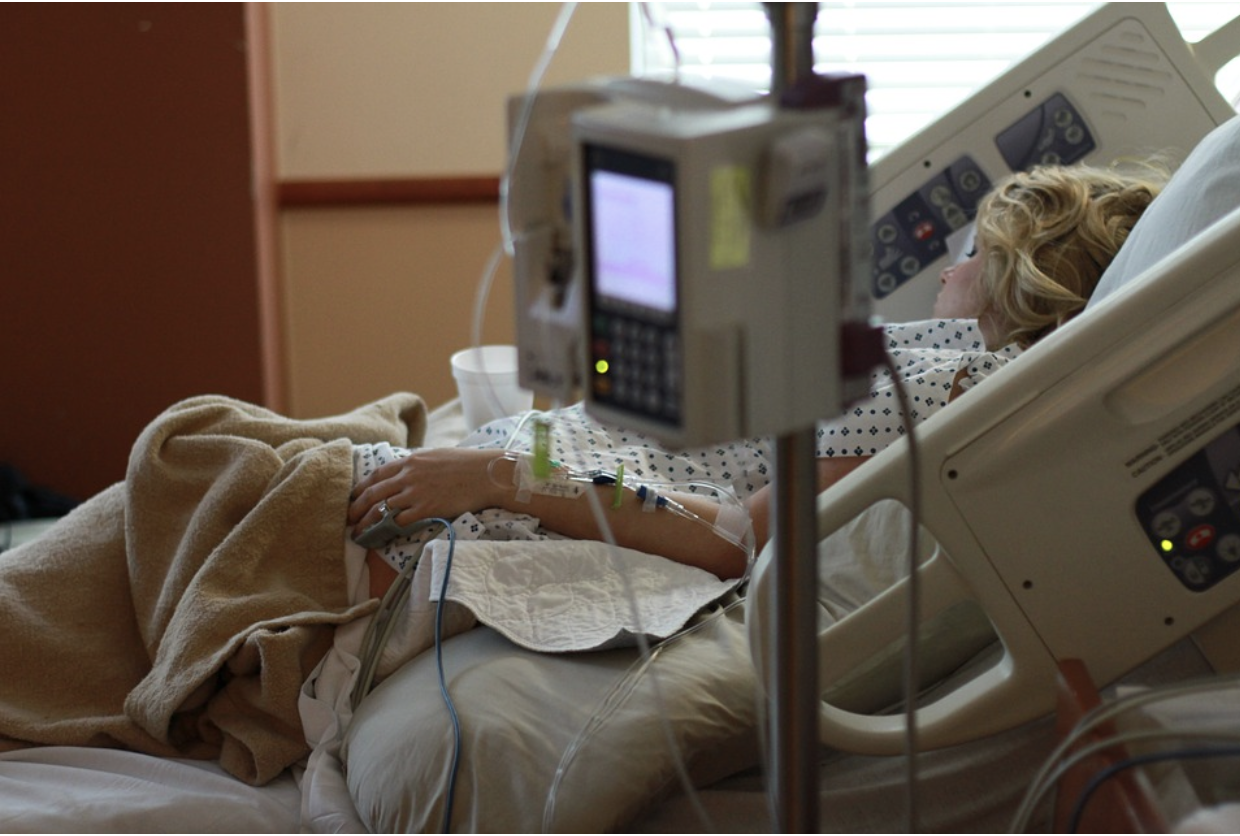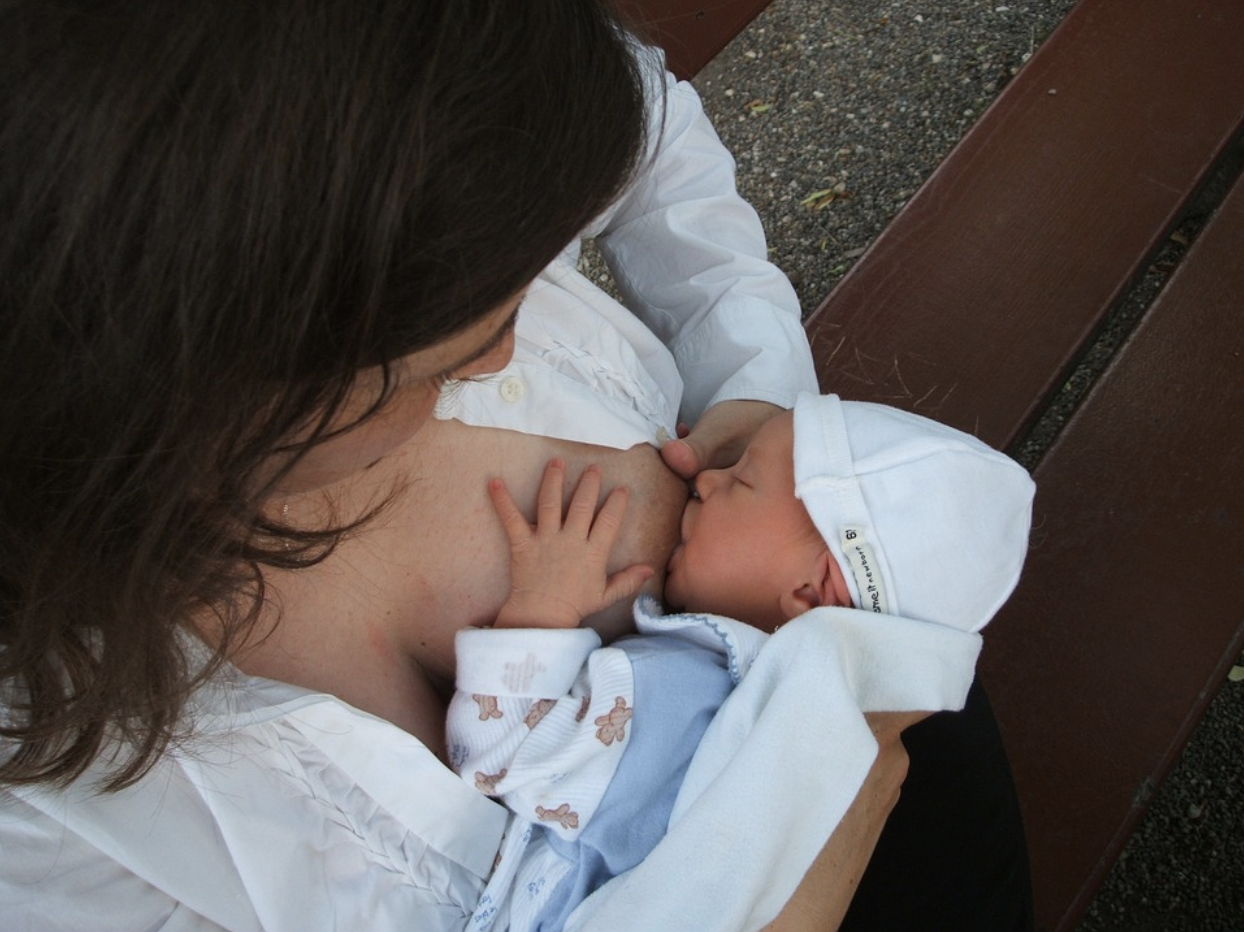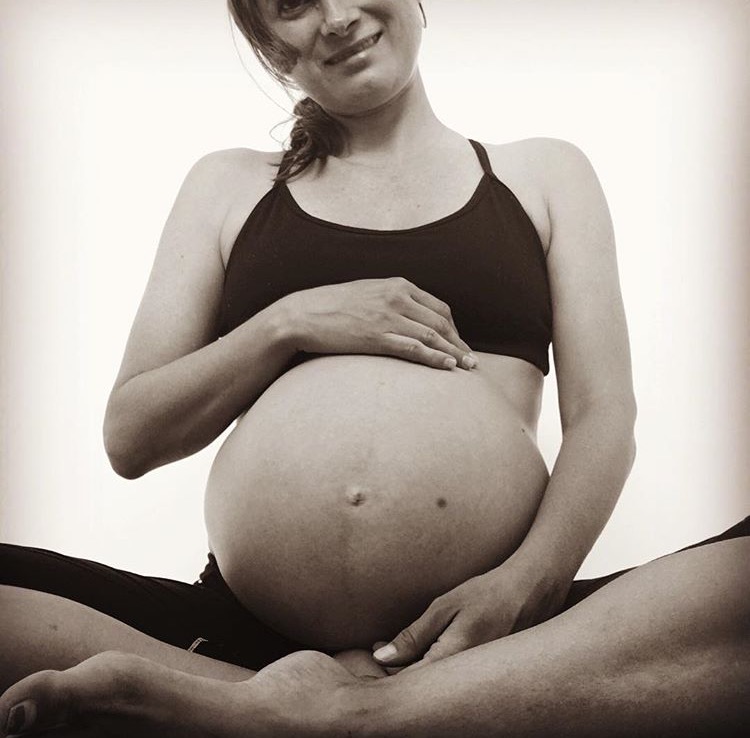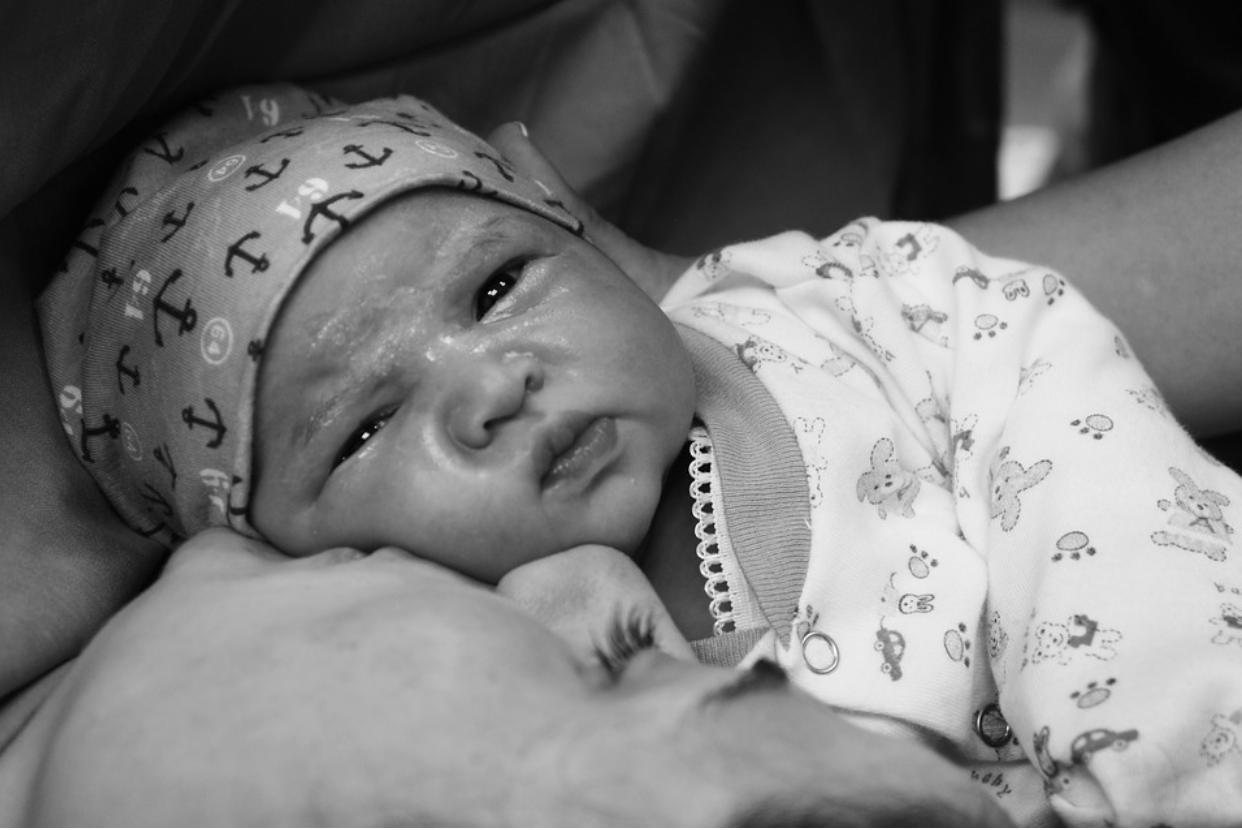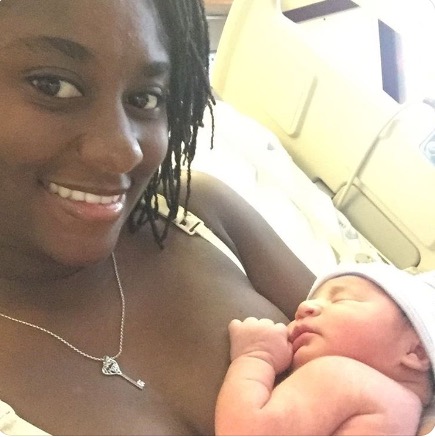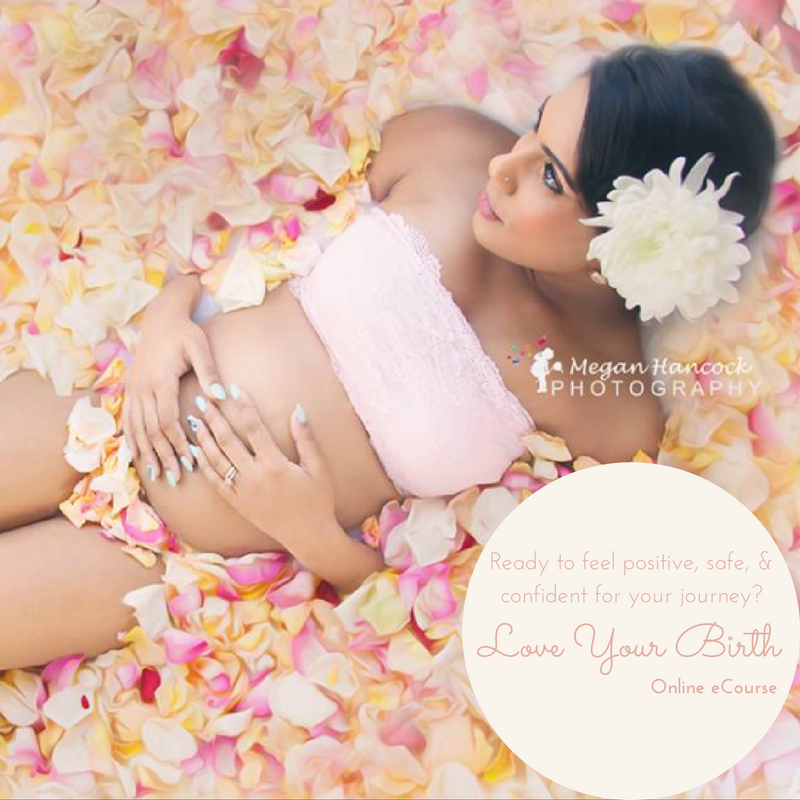Women are good at hiding their pain. And, when it comes to birth trauma, they hide not physical pain but the deep emotional pain of disempowerment, humiliation, disregard, disrespect, loss of control and of dignity.
Did you know that over one third of women characterize their birth experience as traumatic? Every year in the U.S. alone, nearly 4 million women give birth, so that is a lot of women. It seems to me like much more, as I help countless women to heal from it.
Where is all of this birth trauma coming from?
What is Birth Trauma and How Common Is It?
A trauma response is a normal set of reactions someone has after experiencing a life threatening or dangerous, scary, intensely horrible or overwhelming situation - the injured mind/body making sense of a traumatic experience. It is not a sign of weakness or inability to cope; it is not depression or anxiety, but it can lead to those feelings.
While most acknowledge that trauma is an expected occurrence after something like a war, serious accident, sudden death or grave assault, a mother’s (or even a baby’s) trauma following a birth is not widely discussed. Regardless of cause, trauma is trauma, and may lead to post traumatic stress disorder, known as PTSD - which can cause real and long lasting symptoms of psychological distress. The reported prevalence of PTSD varies according to the study.... According to Women's Health Today "in at least one large study, the rates of full-criteria PTSD in the U.S. following childbirth are now higher than those following a major terrorist attack."
The high rate of birth trauma is not acceptable and we must do something about it, by raising awareness and empowering childbearing women and their families to make choices that would minimize the risk, and speak up to their own providers. We can also get involved with organizations doing what they can to improve maternity and newborn care. In the US, there is the Childbirth Connection, and there is the Coalition for Improving Maternity Services (CIMS), who recommend more humane, evidence based care practices in the Mother-Friendly Childbirth Initiative , as well as certify hospitals as mother baby friendly based on adherence to these recommendations. In 2016, CIMS joined forces with BirthNetwork National, a grassroots chapter organization and ImprovingBirth, the nation's largest maternity care consumer advocacy organization. Fortunately more and more hospitals are beginning the process and a number already have the designation, but it is not happening fast enough or on the large scale that is needed.
In countries like Holland and Sweden, where childbirth is treated as normal, with minimal medical and surgical interventions, rates of birth trauma are significantly less - as are the rates of maternal and newborn morbidly and mortality. The United States is among the lowest ranking countries when it comes to preventing fatality and sickness during birth. Despite being one of the most technologically advanced countries in the world, the USA loses more women and babies during childbirth than any other well-developed country. We’re also known for one of the countries that performs the most C-sections. The U.S. cesarean rate is about twice that of Europe - the majority are not medically justified according to maternal health experts - with significantly worse outcomes.
“For.....women, it is not always the sensational or dramatic events that trigger childbirth trauma but other factors such as loss of control, helplessness, loss of dignity, the hostile or difficult attitudes of the people around them, feelings of being invisible, not being heard or the absence of informed consent to medical procedures.” (BirthTraumaAssociation.org.uk) In a meta-analysis of multiple studies, women with PTSD from childbirth use words like inhumane, intrusive, horrific, and degrading to express how they were treated by health care professionals during the experience.
Characteristic symptoms of birth trauma can be mild to debilitating. They include persistent re-experiencing of the events with intrusive recurring memories or vivid flashbacks; nightmares; feeling triggered into extreme distress - pounding heart, faintness, nausea, shortness of breath, racing thoughts and other symptoms of anxiety or panic when exposed to reminders or triggers; avoidance of anything that brings back recollection of the events or the need to talk about it repeatedly; feeling emotionally numb; difficulty bonding with baby or connecting with others, isolation and loneliness; feeling hypersensitive and reactive, wound up, easily startled, hyper alert, vigilant and on guard, on the look out for signs of danger; trouble sleeping, concentrating or remembering usual things; irritability or anger outbursts; feeling depressed, sad and crying for no apparent reason; decreased motivation and interest in activities of daily life and absence of joy.
Sadly, the only goal of the medical world where birth is concerned is to have a breathing mother and baby with heart beats who appear physically healthy.
The psychological impact of giving birth is not really a concept a hospital or its staff can grasp on maternity wards. So, naturally, modern medicine does not necessarily take into account a woman’s fears, emotional pain or inner stress when managing their labor and birth, let alone the baby who is born fully conscious. In a culture that fails to recognize, understand or validate the significance of the psychology of childbirth for the mother or baby, care is given without that sensitivity, leaves a birthing woman and her newborn baby’s emotional wellness unchecked, can make labor, birth and postpartum all the more difficult, and increase the risk of her and her baby feeling traumatized.
With our quick and deep-rooted dependence on technology and modern medicine - the providers, institutions and products, women have let go of their power and the inner knowledge that their bodies already have for giving birth. Sadly, in giving up our power to them, we’ve also forfeited our voice and our choice. Now, it has become part of routine procedure to use machines, tools, and drugs to monitor, and “treat,” normal healthy birthing mothers when all is well; we are conditioned that they are actually needed and beneficial, despite mounting evidence of their harm.
There are other causative factors - like the impersonal nature of busy, short staffed but costly hospitals care. Hospitals need large volume and use of their services and products to keep them in business. We live in a litigious society and health care providers and their institutions are under a great deal of pressure to do all that they can to prevent litigation that entails millions of dollars, risk of licensure penalties or loss, and long years of extreme duress for them; perfection is expected when it can never be guaranteed.
Far too many women are experiencing some kind of trauma during or after their child’s birth, and many hospitals and their health care professionals are not paying attention. This type of care and trauma go hand-in-hand.
How Hospitals Typically View Birth
At the beginning of my career, I was a nurse working in a typical hospital. You’d think I’d have been prepared for the idea of labor and delivery when I found out that I was pregnant with my first child. In fact, working with mothers and their newborn babies as an OB nurse, is where I developed my strong fear of birth in the first place!
I wish I could say that my own birth trauma story is an exception but, unfortunately, it’s a common experience still today. I hear it from thousands of women. In most hospitals in the United States, labor is looked at as a very precarious and potentially problematic situation - a catastrophe or disaster could happen at any moment, resulting in a potential lawsuit. Labor, in the hospital in which I had worked, felt like an emergency or intensive care situation the majority of the time. I was actually in more operating rooms than delivery rooms, and I was assisting more cesarean births than I thought I would. I was then rescuing women and babies from complications caused by the routine medical interventions we claim are called “standard procedures.”
These highly volatile crisis situations scared me not just as a mother but even as a nurse. And, this is where birth trauma begins: chronic fear and inner stress are the enemies of healthy living without dis-ease, and, of giving birth. If a birthing mother is feeling stressed and afraid, she will not labor well, especially if her feelings go unheard or are completely disregarded. She will need interventions, that lead to more problems and the cascade of more interventions.
What Did my Labor Look Like?
When I was in labor with my first baby, the treatment I received from my own doctor was very detached and impersonal (despite this doctor being my colleague). Even though I often told my doctor that I felt worried and afraid, my feelings were dismissed and overlooked, making me feel as though they were unimportant and irrelevant. I started to think something was wrong with me. My stress only inclined from there.
One of the first things to happen to me when I arrived at the hospital was having to take off my own clothes and put on a hospital gown. It seemed innocuous then. I look back on that now and know that this begins the disempowerment and depersonalization. A hospital gown creates a sense of increased vulnerability, a feeling of being sick and dependent, and of being an assembly line patient. It simply felt wrong: I wasn’t a patient - I was a birthing mother; I wasn’t sick - I was in labor. But I did not know any different and that there were options.
The second thing to happen was to be placed in a bed lying down, even though I wanted to stand; my body needed to move around which was discouraged, because the nurse and doctor would be unable to read the monitors placed on me. When a mother is in labor, her body assumes a natural upright position. And, when you think about this, it only makes sense - in the feat to get your baby to come down and out through your birth canal, gravity is your friend! The pelvic diameter is also smaller when lying flat on your back. The baby is pressing on the cervix to dilate it during labor, needs to navigate through the pelvis, and so your body will want to be up and move around, mimicking your baby’s moves in order to facilitate the baby’s travel.
I was also attached to an IV and told not to eat food and drink. As any athlete knows without question, if you were about to embark on a long and arduous physical event like running the 26 mile marathon, for example, you do not go without oral fuel and hydration.
My doctor didn’t talk to me much or explain things. He just kept giving me frequent internal exams without asking, then telling the results to the nurse outside my room “she’s still 4”, and finally I heard, ‘hang Pit.” As a nurse I knew what that was. I was familiar with the procedures, I knew they were going to give me medication that would intensify my labor, causing contractions to come more frequently and be much longer and harder than they naturally would. When I said no, I did not want Pit, my nurse’s well meaning response was 'honey, you don't want a cesarean do you?' It was either take the medication or be faced with the possibility of a C-section, to instill fear rather than knowledge (I now know that these weren’t my only two options and that my body was capable.) Of course I did not want a cesarean, major abdominal surgery, so I agreed. I was feared into it. Then my coping went out the window. I couldn't deal with the agony brought on by the medication. The doctor came in and walked out again and said “She’s still at a 4. Give her an epidural”. It seemed like forever, but then they were giving me an epidural anesthetic via a big needle in my back, into the area around my spinal cord. I was so young and afraid.
Related post: The Unnecesarean Birth Story: How It Might Have Been Prevented
All of the things that come naturally are discouraged by most hospitals still today. I was uncomfortable, and I did not feel safe or secure. Not only were my feelings, worries, wants and needs were completely unheard and ignored, but also I was also made to stay put when my body was screaming to do what comes naturally...until it was numb. Then I did not know what was going on in me. I had no sense of control over my own body and my birth. I was in unnecessary pain and discomfort from the Pitocin, that made me need an epidural.
The epidural caused a prolonged and severe drop in my baby’s heart rate, there was a frenzied panic around me. I was rushed to an operating room for an emergency cesarean - my biggest fear. As a nurse, I knew that if you don’t operate within minutes of this happening you could have a damaged or dead baby. I waited prepped and tied to the operating table in the OR for about an hour, watching the clock, waiting for the assistant surgeon who never came!
I was left completely alone all that time - my husband wasn’t even allowed in the room. I ended up calling out for help because the drugs took over my body and I needed to push. The doctor came running in yelling for supplies. I wound up being cut from the vagina and perineum almost to the anus and my baby was then vacuumed out. She was pink and vigorous. I was afraid to look at her. They said she was fine. I was not fine. I was traumatized.
Postpartum, I had what I now know to be birth trauma. PTSD – a normal response to such an intense situation. I had the symptoms, I just did not know what was wrong at the time. I was getting frequent intrusive memories and flashbacks of the experience, anything that reminded me of the birth triggered horrible feelings in my body. I had a fight or flight response whenever I saw a pregnant woman or newborn baby, whenever anyone would ask me about my birth or talk about their birth – I could not discuss any of it without feeling horrible inside. I felt I could not talk about it or be asked about it at all. I felt wound up, hypervigilant, overprotective and worried something terrible would happen to her – like danger could happen any time. I couldn’t sleep. Even though I loved her completely and wholly, it was hard to look at her and not be reminded of my birth, and because often times I was, I would cry or feel triggered into a panic. I could not even imagine going back to work and facing the scene. When I had to start thinking about going back to work, I began having nightmares. My adrenaline would pump up, and I would feel sick. I’d be hyperalert and on-guard all of the time, as I was also afraid of the sensations in my body.
'You’ll get over it' genuinely caring people would say; or they would ask 'what is the big deal, as you had a healthy baby?' That made me feel worse, like something was really wrong with me, so I felt more ashamed, guilty, alone and isolated. I stopped telling anyone what I was feeling.
What to do?
Throughout history, births were considered a miraculous family celebration (as well, they should be) and babies were born at home. Once births were moved into hospitals in the 1900s in parts of the modern world, birth slowly started to be considered and treated like a medical event. By simply looking at my own story, it’s clear that we’ve created a very intrusive and almost violent way of bringing life into the world. It’s no wonder birth trauma is more prevalent than ever.
The grass roots organization Improving Birth coined the term ‘obstetric violence’ - which is playing out in labor and delivery units in certain parts of the world; the World Health Organization called for increased scrutiny of these disrespectful childbirth care practices, as women treated in this way, feel assaulted and violated, and must be taken as seriously as rape. Women in vulnerable situations of childbirth, are being stripped of their power, voice, and dignity, and are coerced or feared into unwanted invasive procedures; there is loss of control and privacy, and the interventions involve their most intimate selves. If the staff is cold, insensitive, unsupportive and uncaring, or downright condescending and hostile, it only enhances the traumatic emotional pain felt by the laboring mom.
By no means am I condemning hospitals and doctors. I work with wonderful ones and I support women birthing in all settings with all types of trained providers. I am also not condemning modern medicine. I am eternally grateful for it when it is necessary and life saving. While I am a holistic practitioner who helps women planning natural births, part of holistic care is embracing medical and surgical interventions when occasionally needed when there are serious complications or emergency situations, as often they can save the lives of both mother and baby. There can still be trauma when a planned natural birth ends up in the operating room or outcome is devastating. But with awareness and sensitivity we can validate, mitigate the traumatic impact, and more effectively heal. Related post: Birth Story - When Things Did Not Go as Planned
But, what about the vast majority of normal and healthy pregnancies? What about getting back in touch with the part of yourself that already knows how to do this?
Related post: Three Ways to Improve Your Chances of a Healthy Childbirth
In part two of this article on birth trauma, coming next month, I want to teach you how to do just that, how you can prevent birth trauma in the first place, and how to heal from it if you have it.
For now, there are things you can do!! Check out the various podcasts I have been interviewed on about the subject of birth trauma - including The Wellness Mama.
Was your birth upsetting or traumatic? Do you have more questions about processing your birth and need help healing? Arrange some time to chat with me. I’d love to answer your questions and help you heal and get yourself back - I have a program specifically got you, that can also include a revolutionary and last natural healing modality called Clarity Breathwork. Helping women heal from birth trauma is one of my passions and areas of expertise. I have officially published and prelaunched my first two books on Amazon on prevention and healing from trauma...and they both became #1 Bestsellers! They will be released in March, but feel free to check them out.
Natural Birth Secrets: An Insiders Guide How To Give Birth Holistically, Healthfully and Safely, and Love the Experience! Kindle Edition
by Anne Margolis CNM, MSN, Yoga Teacher, Clarity Breathwork Practitioner (Author)
Trauma Release Formula: The Revolutionary Step by Step Program for Eliminating Effects of Childhood Abuse, Trauma, Emotional Pain and Crippling Inner Stress, to Living in Joy without Drugs or Therapy Kindle Edition
by Anne Margolis CNM, MSN, Yoga Teacher, Clarity Breathwork Practitioner (Author)
But if you really want to PREVENT birth trauma, take my online course. Come join my FREE webinar, to learn all about Birth Trauma for moms and babies, so rampant in our country and parts of the modern world. Its called "Secrets To Holistically Healthy Joyful Birth Without Birth Trauma" Discover 5 simple but crucial things you can do right now to drastically reduce your risk! Sign up below:
Let Me Guide You To Create The Happiest Healthiest Birth Experience Of Your Life...
Whether you're a first time or experienced momma, planning a VBAC
Or a midwife, doula, or birth professional guiding mommas..
Regardless if you are intending to birth at home, a hospital, a birth center or need a cesarean section, or if you are taking another childbirth education class…
You Really Can Create The Delivery Of Your Dreams, ROCK your birth.
And have a blissful birth wherever you are. And avoid the common complications - including birth trauma, prevalent in today's modern world from the cascade of routine interventions. You have a choice and you have a voice.
More Precious Than A Wedding...A Birth Should Be A Celebration!
Let me show you how to…
Understand the sensations of your body and connect your intuition with how your body is communicating and leading you towards what to do during labor
Tap into your inner calm to deeply relax yourself,letting go of busy, stressful and fearful thoughts on demand for the health of baby
Speak your truth from your heart in a way that deepens your relationships, sets clear boundaries, and has people listen to you and support you before, during and after pregnancy
Trust yourself, connect with your body wisdom andcommunicate with baby in belly
Connect with natural time and sync your body and mind up with your unique biological clock for ease from pregnancy to postpartum
Reprogram negative patterns, stories, and beliefs that undermine your confidence, strength and self trust so you can rock your birth
Physicians and midwives around the world recommend my teachings to their pregnant clients and many Doulas across the country learn the secrets of blissful birthing from me to supplement their Doula Training & Certification process!
To learn more, visit: LOVE YOUR BIRTH Online Childbirth Course!
It is based on my years of experience, as a midwife and yoga teacher, helping thousands of women tap into their calm and live and birth from a place of grounded relaxation and joy.



